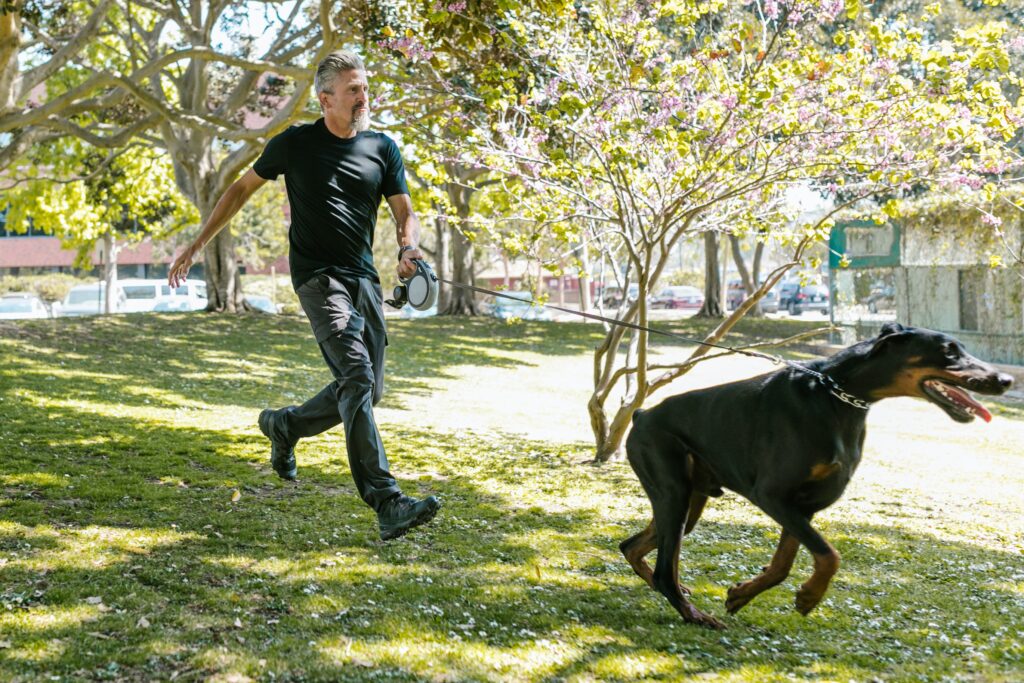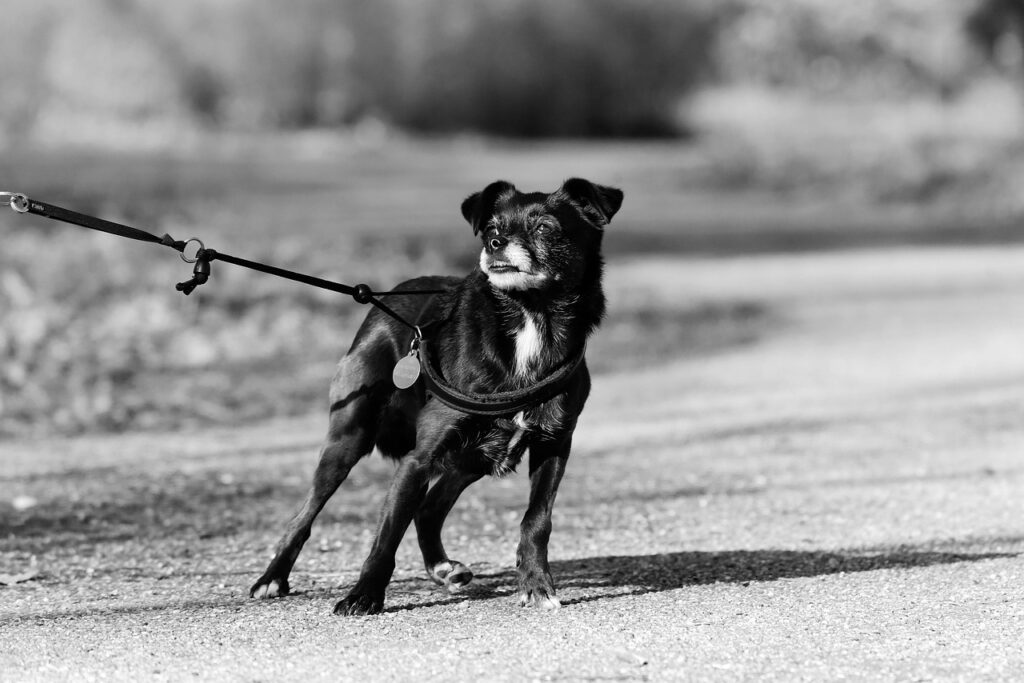Walking your furry friend on a leash is a wonderful opportunity for exercise, bonding, and exploration. However, it can quickly turn into a frustrating experience if your dog persistently pulls on the leash, leaving you feeling like you’re being dragged along.
To effectively address this common behavior, it’s crucial to understand the underlying reasons why dogs pull on leash, and how to tackle them head-on with positive and proactive strategies.
Table of Contents
Instinctual Urge to Explore and Investigate
Dogs are curious creatures by nature, with an innate desire to explore their surroundings and investigate new scents and stimuli. When your dog catches a whiff of an intriguing smell or spots something interesting in the distance, their instinctual urge to investigate can kick in, leading to an enthusiastic pull on the leash.
This can be further fueled by your dog’s heightened senses, such as their acute sense of smell or sharp eyesight, which can easily distract them from walking calmly by your side.
Excitement and Eagerness to Move Forward
Dogs are also creatures of excitement and enthusiasm, always ready for an adventure. When heading out for a walk, your dog may be eager to move forward, explore their environment, and engage in physical activity. This eagerness and excitement can translate into a strong pull on the leash as your dog eagerly surges ahead, eager to lead the way.
Additionally, if your dog is not accustomed to walking on a leash or lacks proper leash manners, they may resort to pulling as a way to release their pent-up energy and excitement.
Lack of Proper Training and Reinforcement
Another reason why dogs may pull on leash is simply due to a lack of proper training and reinforcement. If your dog has not been trained to walk calmly on a leash from an early age, or has not been consistently reinforced for good leash manners, they may resort to pulling as a default behavior.
Inconsistent training, mixed signals, or negative reinforcement methods can also confuse your dog, leading to erratic leash behavior and pulling.
Desire for Social Interaction or Play
Some dogs are social butterflies who love meeting and greeting other dogs or people during walks. When they see another dog, a person, or an interesting object, they may pull towards it with excitement and eagerness for social interaction or play.
This can be particularly challenging to manage if your dog has a strong social drive and becomes overly excited in the presence of other beings, leading to pulling behavior.
How to Stop A Dog From Pulling on Leash
Understanding the underlying reasons why dogs pull on leash is the first step towards effectively addressing the issue.

Once you have a better grasp of the underlying motivations behind your dog’s pulling behavior, you can implement proactive strategies and positive reinforcement techniques to curb the undesirable behavior.
- Begin with Basic Training: Consistent and positive reinforcement-based training is key to teaching your dog proper leash manners. Start with basic obedience commands such as “heel,” “stop,” and “wait,” and reward your dog for walking calmly by your side without pulling. Use treats, toys, or verbal praise as positive reinforcements to encourage and reinforce good leash behavior.
- Use the Right Equipment: Choosing the right equipment can make a significant difference in managing leash pulling. Opt for a well-fitted harness that discourages pulling, rather than a collar that can strain your dog’s neck. Front-clip harnesses or head halters can provide more control and discourage pulling behavior by redirecting your dog’s attention towards you.
- Be Consistent: Consistency is key in dog training. Set clear expectations and be consistent in enforcing them. Use the same commands, gestures, and rewards consistently, and avoid mixed signals. If your dog starts to pull, stop immediately, and gently redirect their attention back to you. Reward them when they return to your side, and resume walking.
- Incorporate Training into Walks: Make your walks training opportunities. Practice commands like “heel” and “stop” during your walks, and reward your dog for walking calmly by your side without pulling. Vary the length and speed of your walks, change directions frequently, and use turns as opportunities to reinforce leash manners.
- Engage Your Dog’s Mind: Mental stimulation can help prevent boredom and reduce pulling. Use interactive toys, puzzle feeders, or training games during walks to engage your dog’s mind and keep them focused on you. This can help curb their urge to pull and keep them mentally and physically stimulated.
- Stay Positive: Positive reinforcement is a powerful tool in dog training. Lavish praise, treats, and playtime for good leash manners. Avoid punishment, yelling, or harsh corrections, as these can create fear or anxiety in your dog and worsen leash pulling behavior.
- Seek Professional Help if Needed: If your dog’s pulling behavior persists despite your efforts, consider seeking professional help from a certified dog trainer or behaviorist. They can assess your dog’s behavior, provide tailored training plans, and offer guidance on how to effectively stop leash pulling.
Remember, patience and consistency are key to successfully stopping your dog from pulling on the leash. Each dog is different, and progress may take time.
Be sure to celebrate small victories and keep a positive attitude throughout the training process.
Conclusion
In conclusion, understanding why dogs pull on leash is crucial in effectively addressing the issue. It could be due to their instinctual urge to explore, excitement, lack of training, or desire for social interaction.
By implementing proactive strategies, positive reinforcement, and consistent training, you can teach your dog to walk politely on leash and enjoy a pleasant and enjoyable walking experience together.


Dennis and Becca, have always shared a passion for man’s best friend. As dog enthusiasts, they put together articles that inform, engage, and captivate fellow dog lovers.